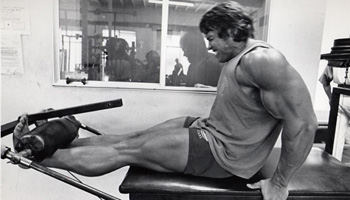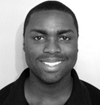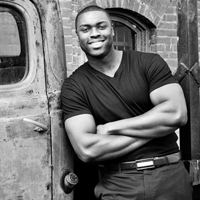3 Size Training Tools That Get the Short End of the Stick


By Lee Boyce
The notion of “good form” and scientifically applicable methods in training has made form sticklers everywhere feel like they deserve a golden star for the methods they employ for themselves and for their clients.
As it turns out, from this group and this group only, come the millions of trolls on the internet, who couldn’t fill out a size Large T shirt from American Apparel if their lives depended on it. The truth of the matter is this: when it comes to size training, big guys didn’t always stick to the textbook in order to make their muscles explode. There’s a combination of doing what’s shown to work best for your body, and employing some modified lifting methods – within reason, health and safety.
Lots of pocket protectin’ members of the form police immediately censure some (if not all) of the methods you’re about to read about below, when the truth is, most of them haven’t had the experience using those same methods to build a decent case against them. They simply repeat what they’ve read or heard from other sources of the like-minded. I’ll make a brief disclaimer by noting that the methods below primarily apply to intermediate lifters who have experience using proper form in the basic traditional training methods for some time. That means people who have only been lifting for 6 months should bookmark this article, and come back to it in the year 2020 once you’ve hit a plateau.
Innocent Suspect #1: The Use of Incomplete ROM
Mid-range partials are hated on by many, and used by few. In certain exercises, coming to a full “lockout” makes target muscles lose tension, and decreases the total time spent under tension (TUT). Not only does stopping shy of a lockout increase TUT to release more vital hormones for growth and development, but it also can assist in increasing blood volume through target muscle groups and creating a pump for the ages. Plus, you’ll create more microtrauma, which will lead to greater sarcoplasmic hypertrophy. In English, that means you’ll put on size in a hurry. If you’re really looking to get swole, it doesn’t hurt to add a few extended burnout reps (or even complete burnout sets with short rest) that have plenty of partials to finish the muscles off. These are my favourite moves with which I employ this method:
- Goblet squats
- Front squats
- Seated DB shoulder press
- DB Bench press
- BB Bench press
- Leg press
- Split squats (rear leg
elevated)
Innocent Suspect #2: The Use of the Smith Machine
This is probably at the top of every hit list you see when it comes to the “functional” training crowd. The smith machine creates an unrealistic simulation of a barbell path since it doesn’t allow stabilizing muscles to enter the movement and align with the natural changes they make during a free weight rep. There are reasons why this would be disadvantageous for the functional crowd, but there are several reasons why this would be an advantage for the size crowd – especially when it comes to upper body training.
We already know that one of the best ways to approach size training for a specific muscle group would be to lower the rest intervals and focus on high volume training methods in isolation. Why not use a fixed bar path to zero in on the exact pools of muscle fibers and motor units you want to hit, and not worry about contributions from other muscle groups or stabilizing structures? What’s bad for, say, a sport athlete, can be just what the doctor ordered for a guy who wants to get big, simply for the sake of being big. The increased isolation coupled with the possible increase in time under tension (see above section) can be a one-two punch for making muscles grow. Once more, here are my favourite moves to use the smith machine for when it comes to size training:
- Bent over rows
- Seated shoulder press
- Incline bench press
- Upright rows/high pulls
- Flat bench press/Decline bench
press
Innocent suspect #3: Leg Press/ Ham Curls/ Leg Extensions
Many “good” trainers will state that the leg press is a poor substitute for a squat since there’s no hip extension and the core doesn’t have much work to do. They’ll say hamstring curls and leg extensions are both open chain exercises which can inflict shearing forces on the knees.
And they’re right.
People who aren’t susceptible to injuries will be completely fine when incorporating these exercises, as long as they’re used in moderation and not as the “go-to” for their training protocol. Keeping squats and deadlifts in their rightful position at the top of the priority list for quad, glute and hamstring training, is a good idea because these (and also hack squats) can be excellent supplementary exercises for size. Ask any pro bodybuilder if they’ve ever used the above exercises as part of their training, and with the exception of a few lifters whose joints disagree with the movements, you’ll get a resounding “yes” for an answer. As long as your knees and hips can deal, you should too. Remember, when it comes to size training, the amount of weight you can move means less than the stimulus you provide for your muscles through reps performed, max tension, and low rest intervals. Sometimes less weight is more.
Summary
These are three fake culprits I notice are spread around the fitness world as “no-no” exercises. The truth is, there are several more that escape the confines of this article. Rather than only looking to the books and the “science” for the answer, use common sense. Apply what works for you, and remember that research is subjective and never conclusive when it comes to the open-ended industry of exercise science. Our bodies were made to move!
ABOUT THE AUTHOR

Lee Boyce is an internationally recognized fitness writer and strength coach based in Toronto, ON. He competed nationally as a sprinter and long jumper while attending university for Kinesiology studies. He has been featured in over a dozen major publications and is the owner of Boyce Training Systems. He is a trainer to clients and athletes for strength, muscular development and general conditioning. In 2013, he was named to the training and treatment staff for Team Jamaica at the Penn Relays.
Facebook: http://www.facebook.com/lee.boyce.52
Twitter: http://twitter.com/coachleeboyce
